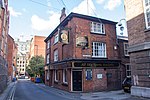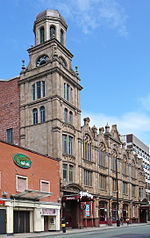Manchester Library & Information Service

There are 24 public libraries in Manchester, England, including the famous Central Library in St Peter’s Square. The oldest community library still in use is Levenshulme Library in South Manchester, built in 1903. Levenshulme Library is also a Carnegie library, having been built with money donated by Scottish-American businessman and philanthropist Andrew Carnegie, who funded the building of over 2,500 libraries across the world. Two new multimillion-pound libraries have recently opened in North Manchester as part of a major regeneration scheme, including the eco-designed North City Library in Harpurhey. and The Avenue Library and Learning Centre in Higher Blackley.
Excerpt from the Wikipedia article Manchester Library & Information Service (License: CC BY-SA 3.0, Authors, Images).Manchester Library & Information Service
Jackson's Row, Manchester City Centre
Geographical coordinates (GPS) Address Nearby Places Show on map
Geographical coordinates (GPS)
| Latitude | Longitude |
|---|---|
| N 53.479242 ° | E -2.248737 ° |
Address
Jackson's Row 1
M2 5DA Manchester, City Centre
England, United Kingdom
Open on Google Maps











